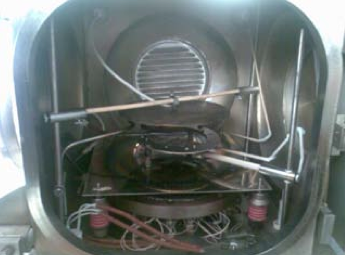Formation regularities of the biocompatible coatings on titanium and iron alloys for artificial limbs and medical instruments
Regularities of structural phase transition at the formation of biocompatible protective coating by complex high-energy treatment were determined. This could consciously control the processes of their creation as well as a set of performance properties. An important characteristic of biocompatible coatings is their strong connection with the base that ensures long-term strength of implants in the human body. High adhesion strength is provided by the ascending diffusion of the alloying element, aluminum (base coat) of the sample volume, where it is in solid solution to the surface where it forms a thin transition layer strongly bound to the crystal lattice of the material base. The next oxidation leads to the formation of coatings on aluminum oxide (Al2O3), which also has a strong connection with the base. The process of rising diffusion occurs toward the flow of radiation defects-vacancies that arise on the surface bombarded by ions of inert gas (argon) and moved deep into the sample. Model alloys of titanium with aluminum were used as the samples.
Installed options and schemes developed devices for ion-plasma processing modes that provide the surface bombardment by ions in the given range of energies required for the creation of radiation defects and which do not lead to sputtering of surface atoms.
Developed complex methods of biocompatible coatings based on aluminum oxide at the pulsed high-energy treatment – electro-spark alloying and laser chemical-heat treatment of titanium alloy VT1-0, which is used for the manufacture of implants. Also investigated formation of biocompatible coatings based on zirconium oxide. High adhesion strength of coatings due to the fact that the processing occur micro metallurgy processes in which fusion occurs coating material and material basis. The optimum parameters of the complex process – electro-spark alloying and laser irradiation that leads to an increase of microhardness and wear resistance biocompatible coatings.
On the basis of the study suggested a qualitative model of structural phase transitions occurring under extreme conditions of pulsed high-energy electro-spark and laser chemical-heat treatment in saturating media.





